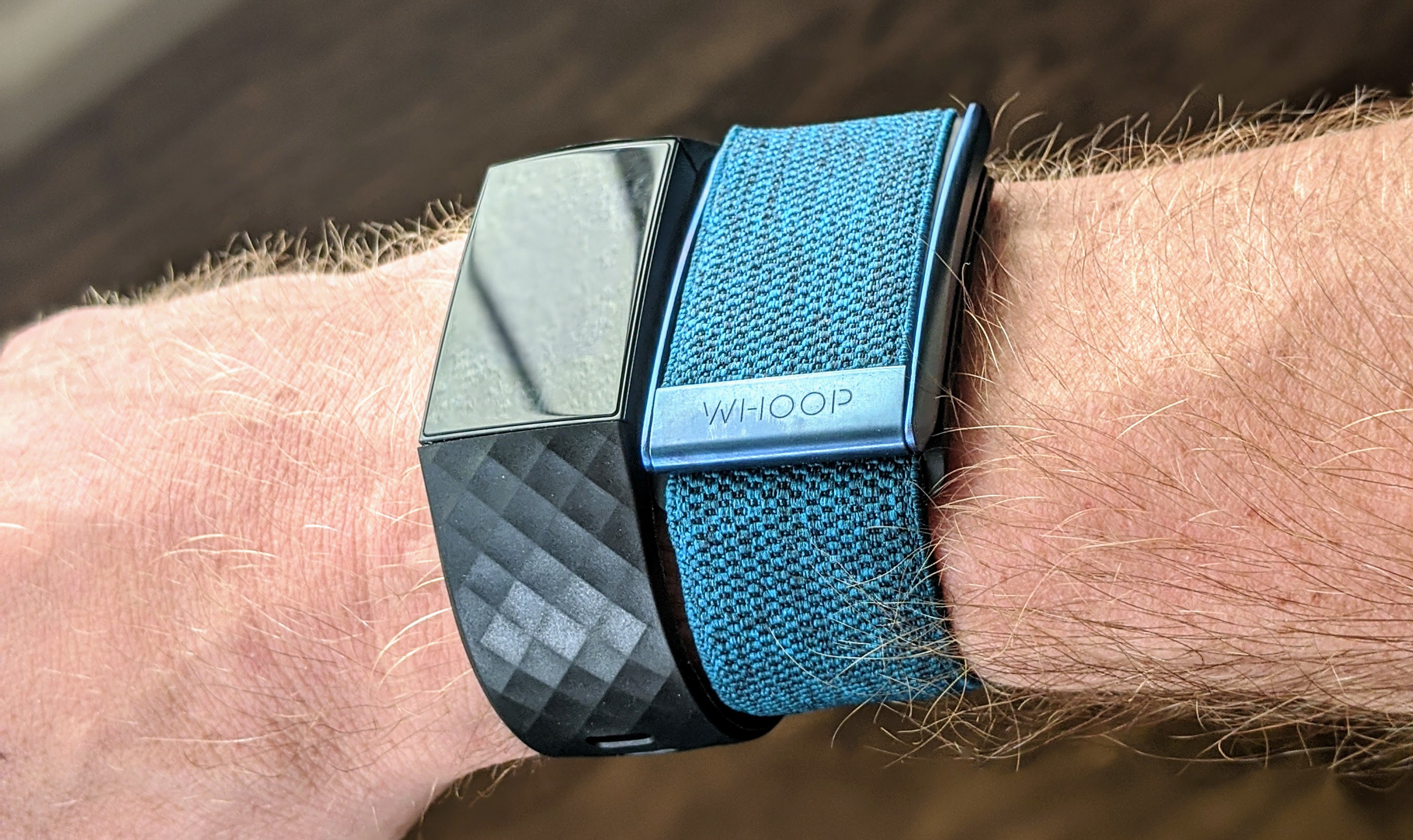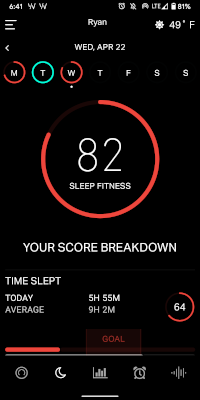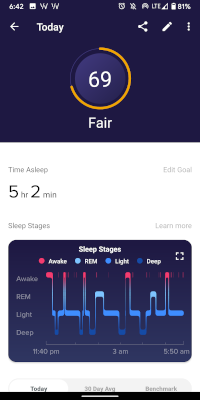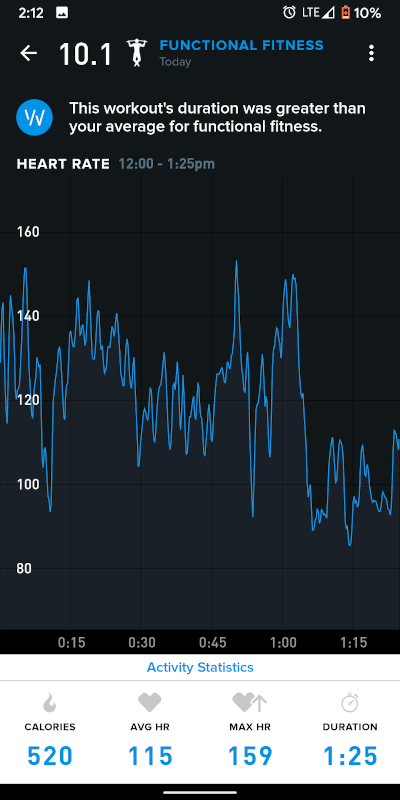on heart-rate, sleep tracking, and the future
 |
|---|
| bling bling |
the quantified-self craze of 2010 finnally caught up with me in early 2020. i have sleep maintence problems, including waking up in the middle of the night (motn insomnia) or waking up early due to anxiety. i’ve had myocarditis a few times in the past, a minor heart condition. i also started a regular workout routine to help get through the coronavirus quarantine. all this culminated in a desire to better understand my sleep and heart rate, with an eye toward longevity. that and i keep hearing about hrv.
heart rate variability (hrv) is a time interval between heartbeats. athletes and podcasters have been extolling this metric as a proxy for physical recovery and as a predictor of sickness or injury. part of my interest in 24/7 heart rate tracking was to tap into this to get actionable insights. all other health data to date has been “so-what” or “i knew this already” e.g., after a night of little sleep, my sleep tracker telling me “you need to sleep more”.
the three non-sponsored devices i ended up with: eight sleep pod, fitbit charge 4, whoop 3.0
on price:
- whoop 3.0 band: $324 for 18 months, then $30 month every month thereafter
- fitbit charge 4.0: $150
- eight sleep pod: $500 (used on on craigslist)
on comfort:
i shower, swim, surf, sweat, and sleep with my bands on, and they have both been excellent. the whoop didn’t do so well with rough surf given the way the band attaches to the clasp. during my last surf session it came unfolded after a wipeout, but didn’t un-clasp.
the whoop dries fast enough after a shower that I don’t even notice. it’s probably the most comfortable band i’ve ever put on. the fitbit isn’t far behind. the whoop has a lower profile than the charge 4. getting the whoop on for the first time was strange as I couldn’t open the clasp. an enterprising individual suggested a credit card to pry the thing open: voila!
eight sleep pod isn’t loud, it gets suffciently hot and cold, and the mattress is super comfortable as a side sleeper. sometimes the mattress turns off or doesnt change temperature as expected throughout the night when on “smart temp” mode. I suspect my lack of wifi to be the culprit; a cellular hotspot is the way my sleep pod connects – or more commonly disconnects. napping with it on “extremelly cold” or “extremelly hot” is one of my great joys.
on battery life:
- whoop gets a solid 4 days then starts bugging you to plug it in when it’s below 20%
- fitbit charge 4: i’ve turned off most features: screen is off/dim, no notifications, ‘always-connected’ off. with these configurations it gets a solid 7 days
one of the coolest parts of the whoop is the way you charge it. it has a rechargable clip sits ontop of the band that takes about 40 minutes. with this you dont need to take off the band. the fitbit charge 4.0 should charge this way, but unfortuantely as it is now you need to take it off to charge for about 1 hour.
on accuracy:
-
when it came to sleep data, all three devices were close enough to not matter.
- whoop, eight, and fitbit showing auto-detected sleep data:



-
when it came to heart rate during the day time, the fitbit and whoop diverged quite a bit.
- both failed to auto detect a 85 minute outdoor bootcamp style workout, so I added it manually:


above fitbit reports my heart rate went down to 63 in the middle of that span, which seems unlikely. i’ll chalk it up to band placement but it appears whoop is more accurate. fitbit reported 524 cals, and whoop 520.
on apps:
the whoop app is the best of the bunch. it let’s you record videos with live heart rate lenses to share on social media. whoop doesnt let you export any of your data though, which is concerning. in 2020 bluetooth is still problematic in the android world. i had issues insitially connecting it and occasionally issues with it syncying. /sigh
the eight sleep app feels like the jankiest of the three. priming the pump felt like a “pray and see” situation.
on forced subscriptions:
as of april 2020, these devices all have some form of monthly membership:
- whoop 3.0 requires a $30/month membership, else your device is unusable
- fitbit has an optional $10/month (90 days free) membership to get access to ‘premium’ data like number of sleep disruptions
- eight has an optional $60/year (12 months free) membership to get access to coaching
what bothers me about this is the trend here: fitbit has taken away things once free, adding them to the paid membership; whoop used to allow you to buy the band but now requires you to pay monthly, forever. in the future i expect all these devices to require some form of monthly membership fee. i don’t see how these businesses can survive without it. this is problematic because they aren’t actually providing monthly value. The whoop band comes closest to the dream of quantified self: take action based on signals to improve quality of life. The strain/recovery coaching is superb. however, it’s still in the realm of “i knew this already” as mentioned above.
results:
- do i sleep better? no. after nights with sleep elusive i’m loathe to even open these apps, yet whoop dutifully sends me a push notification: “get at least 6.2 hours sleep to get by”. thanks.
- have i used hrv to better plan workouts, sleeping, or health in general? no. HRV is the new CBD.
- why do i still measure? to show off to friends, and for fear my heart will do something janky and somehow historic data will help my doctor make sense of it.
future:
- canned videos of workouts and stretches, sleep scores, activity zones, strain, pseudo-coaching, re-defined or sham analytics and metrics: these are all things I already know and won’t pay monthly for.
- tell me what foods im allergic to and should stop eating
- tell me if there are issues in my stool
- tell me how my blood glucose responds to things
- give me real insight i currently don’t have, and i’ll gladly pay monthly. we are closing in on the limit of value optical sensor devices can provide*.
 |
|---|
| that drip |